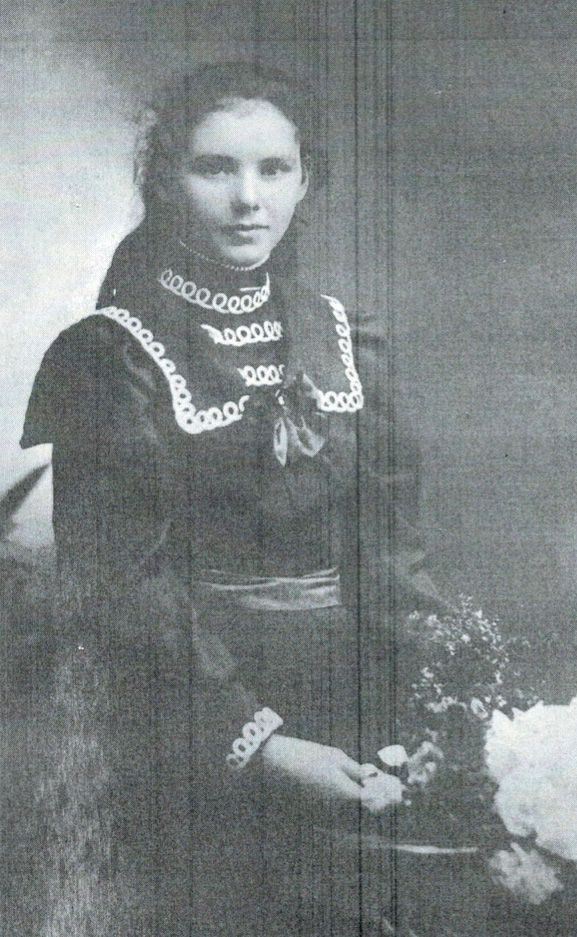The Inseparables
Vintage, $24.99 hb, 155 pp
Interstitial spaces

‘I loathe romans à clef as much as I loathe fictionalised biographies,’ wrote Simone de Beauvoir (1908–76). For this reason, the novel and the memoir were her preferred genres, even though the boundaries between the two were frequently blurred, a distinction that Beauvoir insisted must be maintained: fiction has ‘only very dubious connections with truth’. While Beauvoir was adamant that her fictional women protagonists are ‘not her’ in any recognisable sense, she conceded that characters may resemble living models. The most famous example is Lewis in The Mandarins (1954), loosely based on Nelson Algren, the American writer and Beauvoir’s lover for some twenty years. It may be loose, but the resemblance was enough for Algren to take his revenge by panning subsequent American editions of Beauvoir’s work. Even memoir has a very particular relationship to reality for Beauvoir. The writer of the memoir is not the same as the subject: the future, she notes in Memoirs of a Dutiful Daughter (1958), ‘would turn me into another being, someone who would still be, and yet no longer seem, myself’.
The Inseparables has been called the fifth instalment of Beauvoir’s four-volume autobiography – Memoirs of a Dutiful Daughter, The Prime of Life (1960), Force of Circumstance (1963), and All Said and Done (1972). Yet it differs from her memoirs in that, despite the first-person narration, the characters are ostensibly ‘fictional’ avatars. The book follows the sporadic and intense relationship between the young Sylvie (read: Beauvoir) and Andrée (read: Elisabeth ‘Zaza’ Lacoin) from their first meeting as students at a private Catholic school in Paris to Andrée’s death from viral encephalitis at the age of twenty-one. The Inseparables, then, occupies a unique place in Beauvoir’s oeuvre: a fictionalised memoir of the very sort she vowed never to write. Where it differs from memoir is primarily in its form: it is, to use translator Lauren Elkin’s words, a ‘deliberately patterned, attentively sculptured narrative, streamlined and disciplined where the memoirs are digressive, and unified in its plot’. In her dedication, Beauvoir describes The Inseparables as ‘pure literary artifice’; a story only ‘inspired’ by her friendship with Zaza.
Zaza first appeared in Memoirs of a Dutiful Daughter as companion, platonic love interest, and alter ego of the young Beauvoir. Here, Beauvoir describes meeting Zaza as the ‘blinding revelation’ by which ‘conventions, routines, and the careful categorisation of emotions were swept away … by a flood of feeling that had no place in any code’. Like all forbidden love, the tacit mutual acknowledgment of these feelings manifested itself in a somewhat ‘stiff and formal’ relationship: ‘there were no kisses, no friendly thumps on the back; we continued to address one another as “vous”, and we were reserved in our speech’. The relationship does not move beyond this, despite references to the occasional ‘excessiveness’ of Simone’s feelings for Zaza. Like Memoirs of a Dutiful Daughter, The Inseparables depicts, as Deborah Levy points out, the ‘enigma of female friendship that is as intense as a love affair, but that is not sexually expressed, or even particularly repressed’. It is this interstitial space between repression and expression that the book occupies.
If there is an erotic subtext, it is well hidden, condensed into a single sublimated gesture: the presentation of an embroidered bag by a flush-faced Simone/Sylvie to a bemused Zaza/Andrée. This scene, among others, appears in both Memoirs of a Dutiful Daughter and The Inseparables, rewritten or reimagined in the latter work. Zaza’s attitude towards the gesture is confused and distant in the former book; Andrée’s is ecstatic and ardent in the latter. Beauvoir’s nostalgia for her relationship with Zaza was evidently complicated by the realisation that this relationship was not as important to Zaza as it was to her. Thus, one can expect in The Inseparables some secondary elaboration recasting events in light of this realisation.
Critics in France speculated that the book was not published in Beauvoir’s lifetime because it was too intimate, too scandalous, or because Jean-Paul Sartre deemed it unworthy of Beauvoir’s talent. Sylvie Le Bon de Beauvoir, Beauvoir’s adopted daughter and executor of her literary estate, rejects these speculations, claiming the real reason was that Beauvoir simply wanted to move away from fiction to concentrate on memoirs. The book was important to Beauvoir, who was nostalgic for her friendship with Zaza her whole life. It was her relationship with Zaza which made Beauvoir ‘attach so much weight to the perfect union of two human beings’. It was a formative experience for Beauvoir, who considered herself bisexual from an early age, rejecting homosexuality as just ‘as limiting as heterosexuality: the ideal should be to be capable of loving a woman or a man; either, a human being, without feeling fear, restraint, or obligation’.
Despite Beauvoir’s claim that the book is Zaza/Andrée’s story, Sylvie remains the novella’s protagonist. The Inseparables is in essence a coming-of-age story that deals not only with the situation of young women in French society at the time (‘Join a convent or get a husband’), but also Sylvie’s loss of faith at a young age which, rather than produce suicidal despair, as it does in Andrée, instead gave birth to the existential affirmation of life without God that would become foundational for Beauvoir’s worldview. ‘Faith,’ Beauvoir once said, ‘allows an evasion of those difficulties which the atheist confronts honestly.’ So at times does fiction, which is why she was wary of it as a mode of writing. This is not an honest confrontation of Beauvoir’s relationship with Zaza; that can be found in Memoirs of a Dutiful Daughter. What The Inseparables does is colour the past with its afterglow in the present. This may be contrary to Beauvoir’s ideas of truth, but it reveals an aesthetic sensibility that is not always apparent in the memoirs. The scandal of the book, according to Le Bon de Beauvoir, is not so much social or sexual as philosophical. In existential terms, it is the story of the struggle between two forms of Being, Being-for-oneself and Being-for-others, between a unique individuality and the constraints of its milieu. The question the book poses, very early on, is ‘can you really be punished for the things you think?’ The answer Beauvoir gives is ‘yes’.











Comment (1)
Leave a comment
If you are an ABR subscriber, you will need to sign in to post a comment.
If you have forgotten your sign in details, or if you receive an error message when trying to submit your comment, please email your comment (and the name of the article to which it relates) to ABR Comments. We will review your comment and, subject to approval, we will post it under your name.
Please note that all comments must be approved by ABR and comply with our Terms & Conditions.